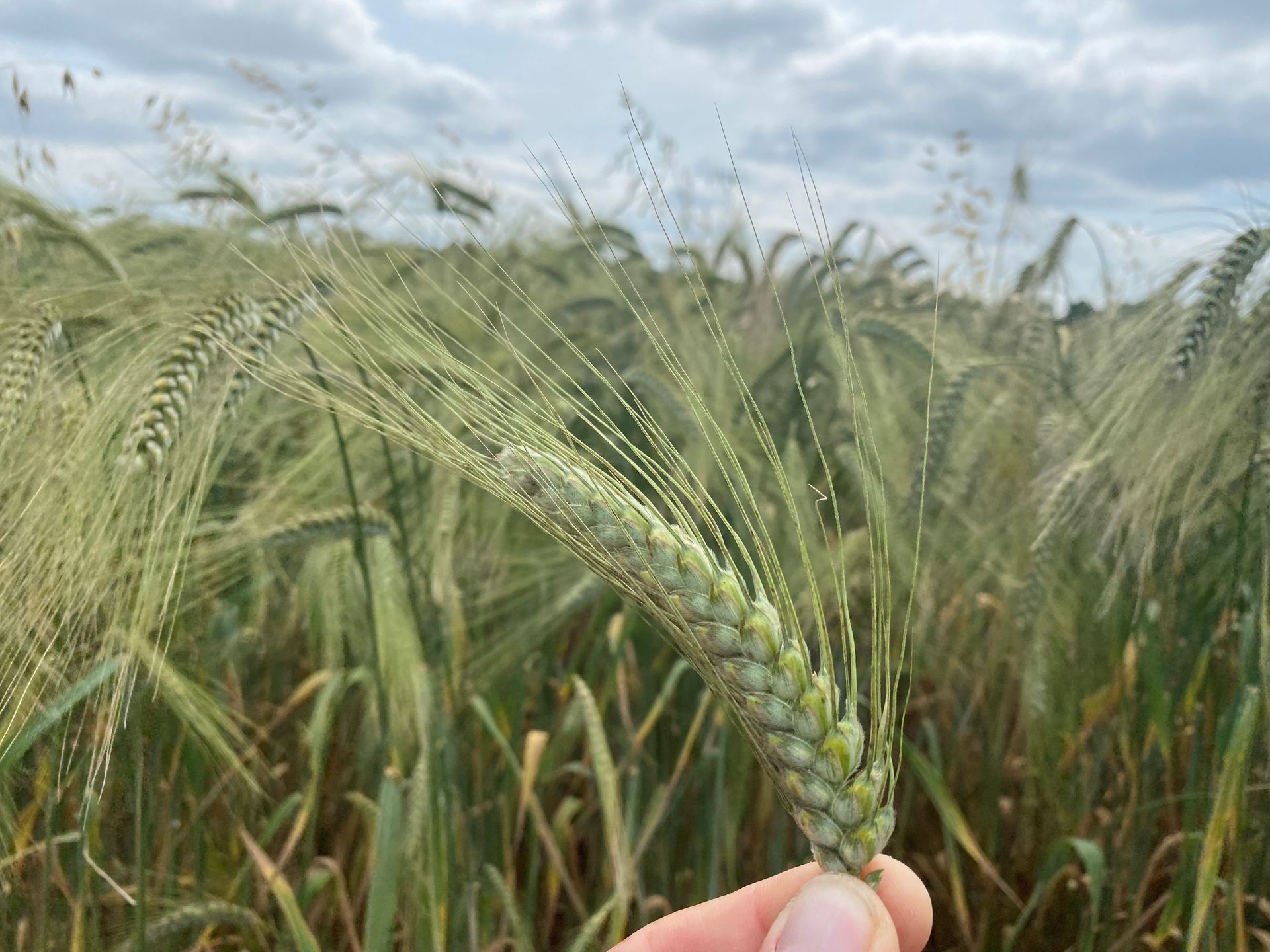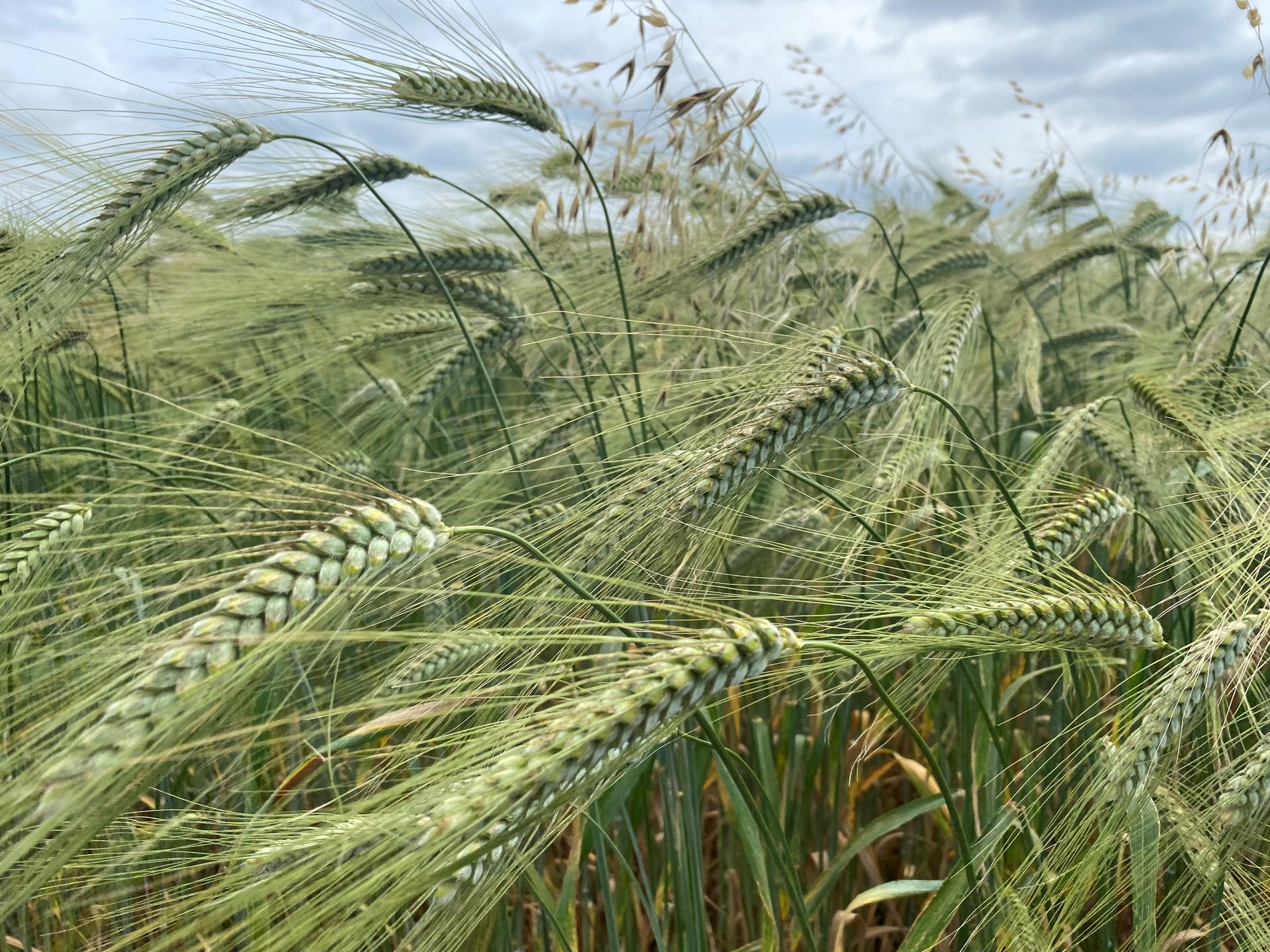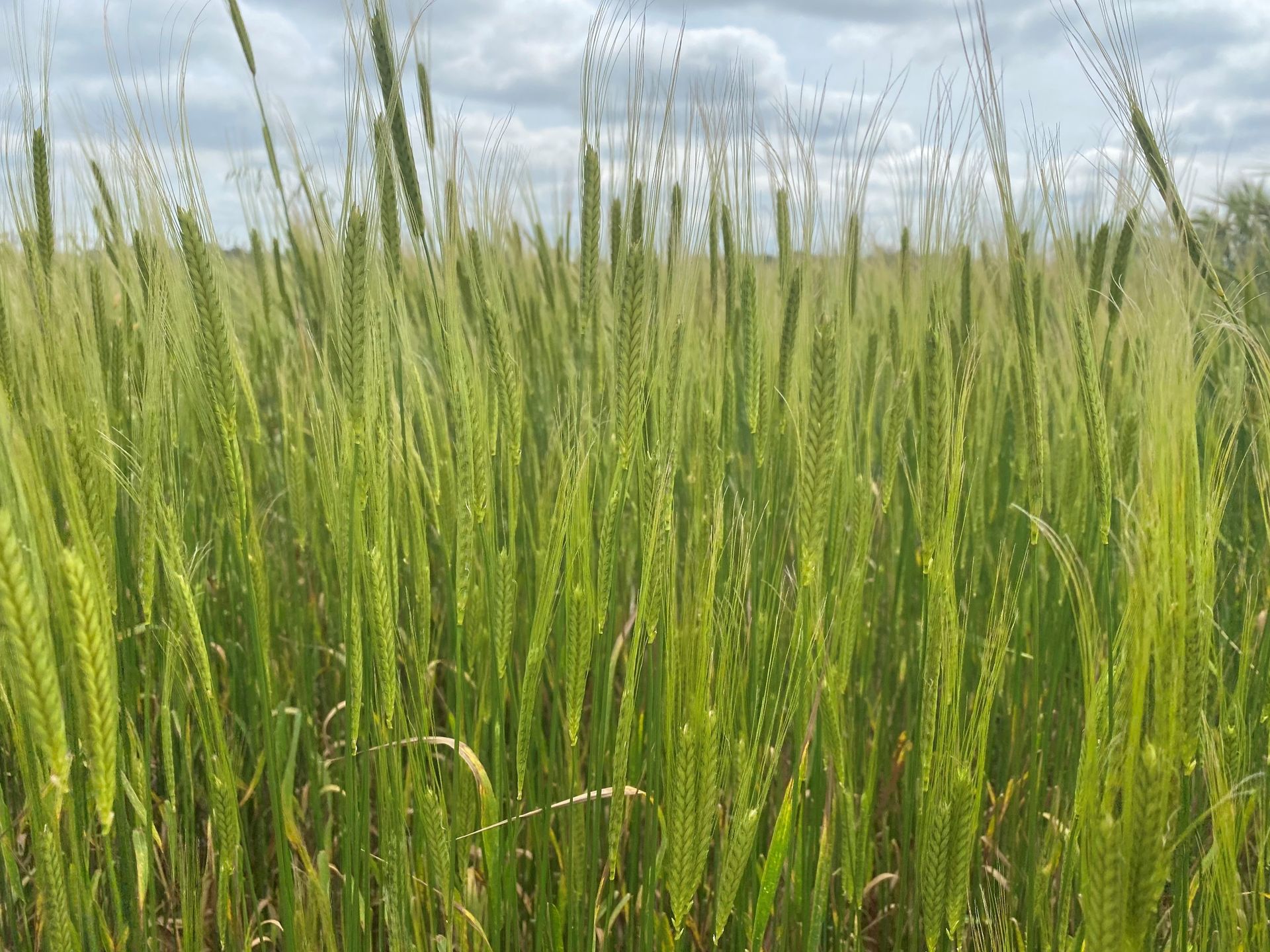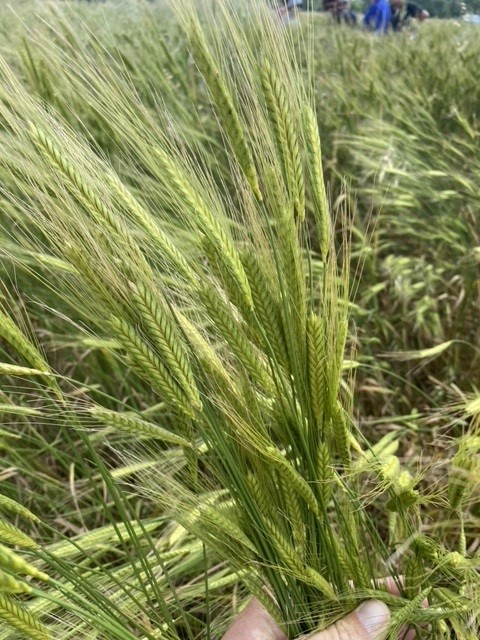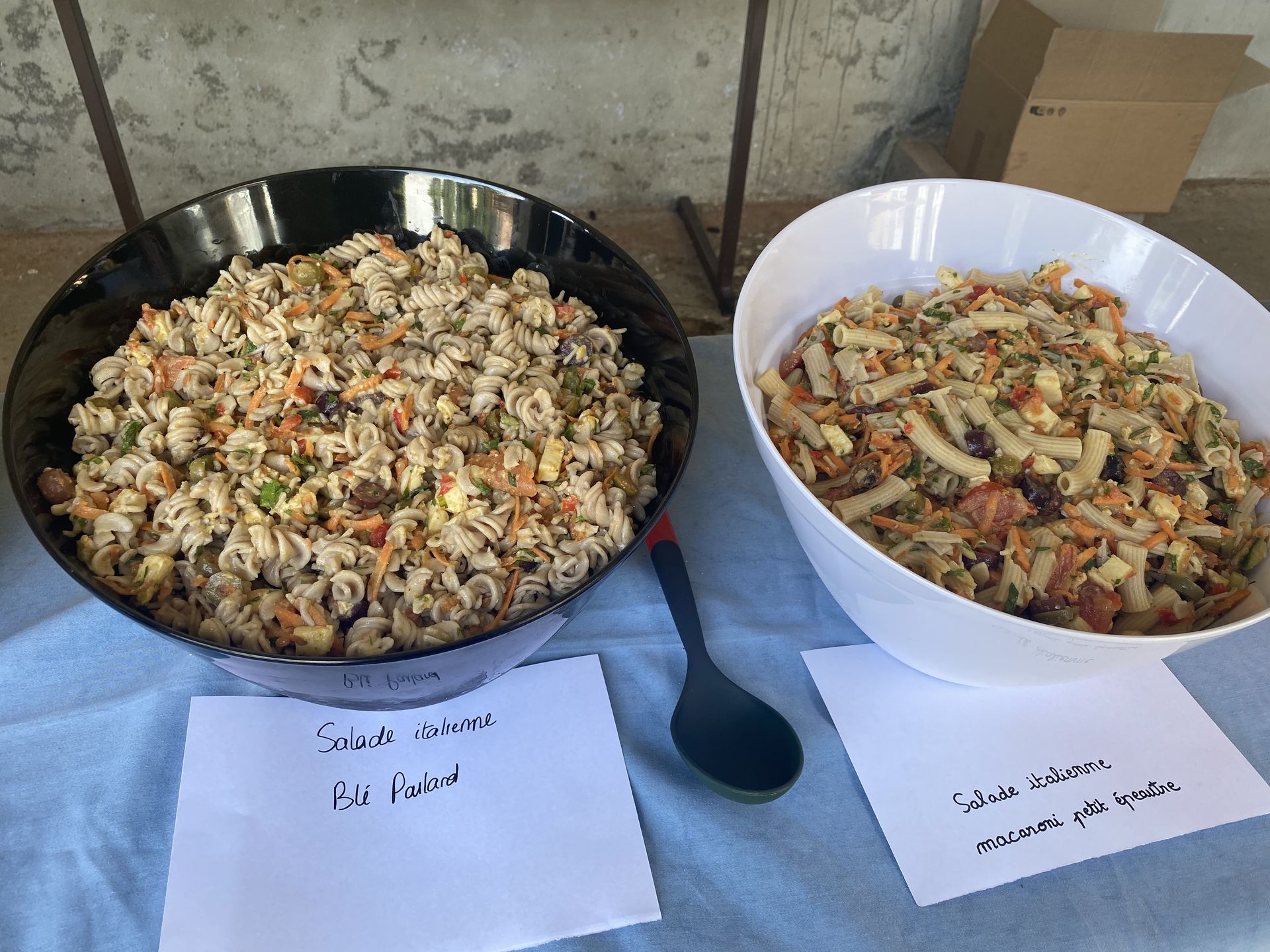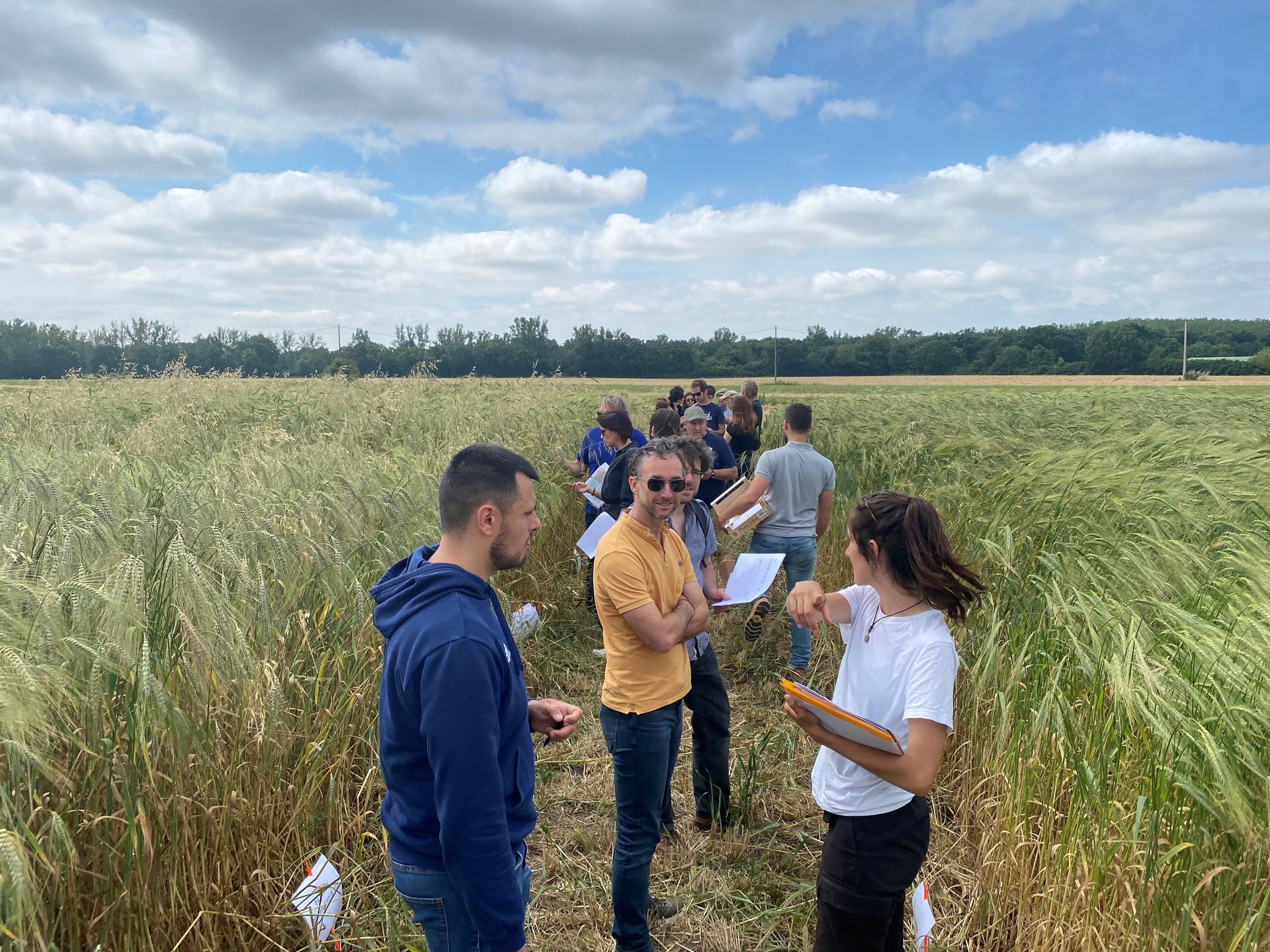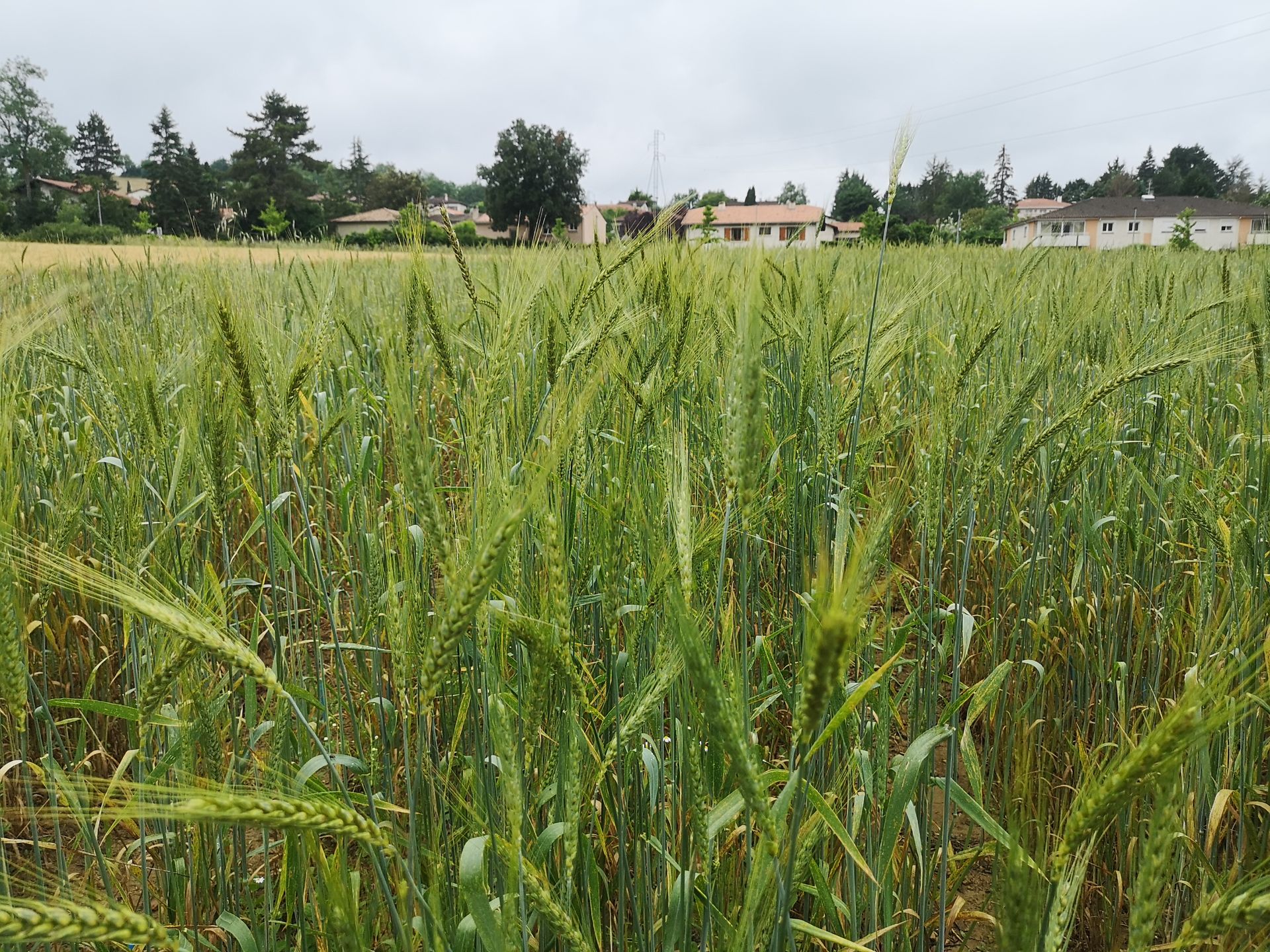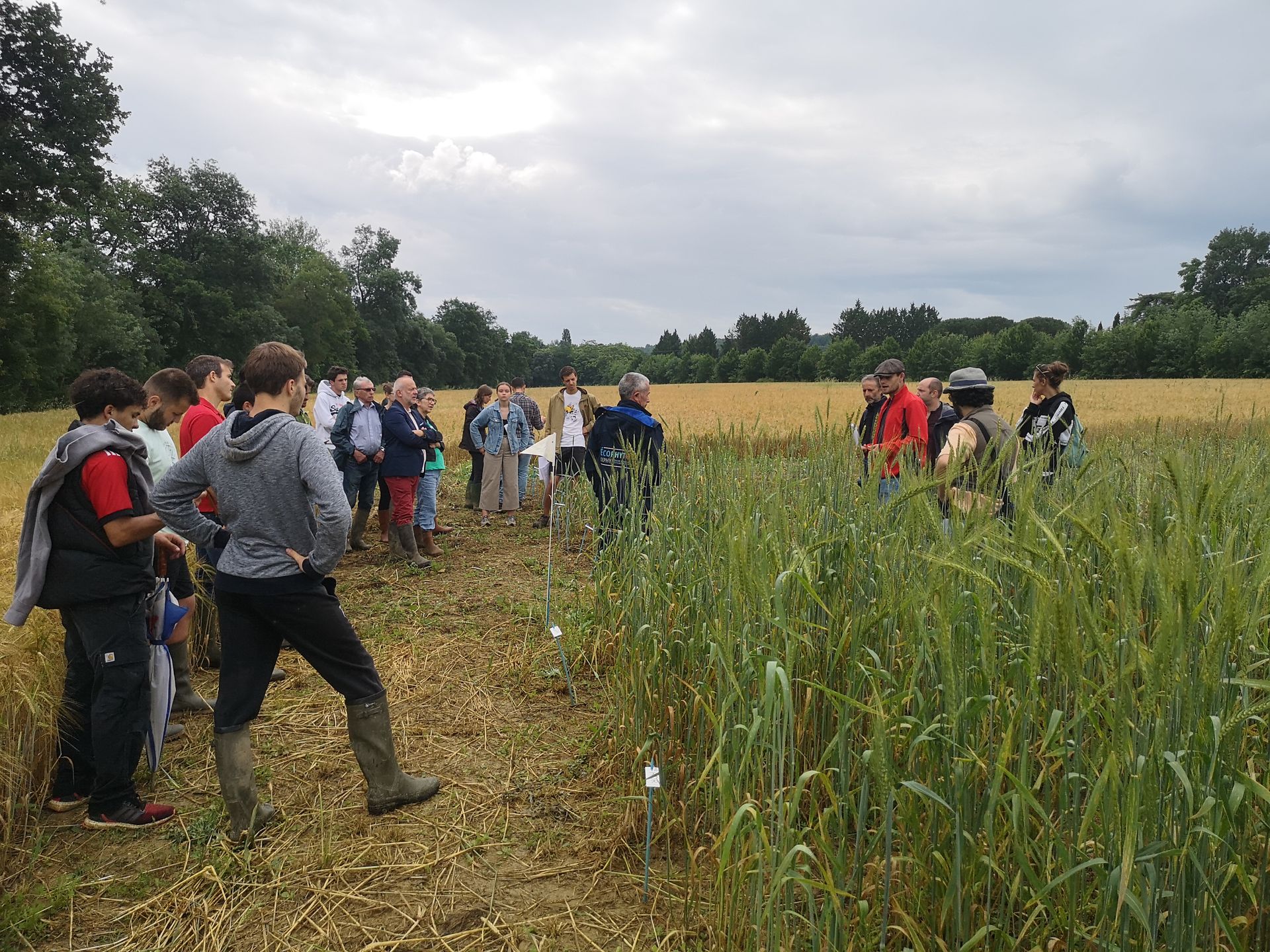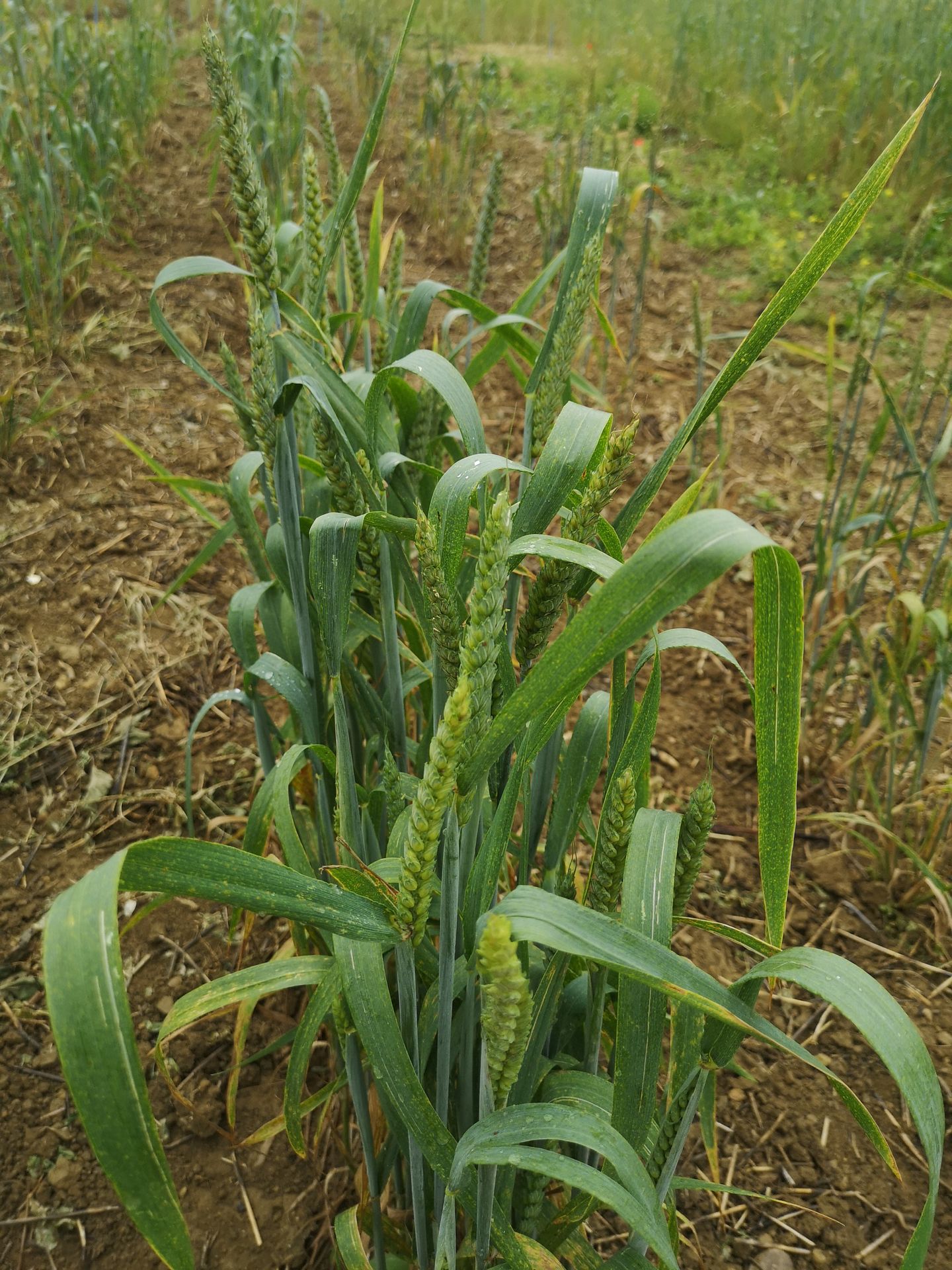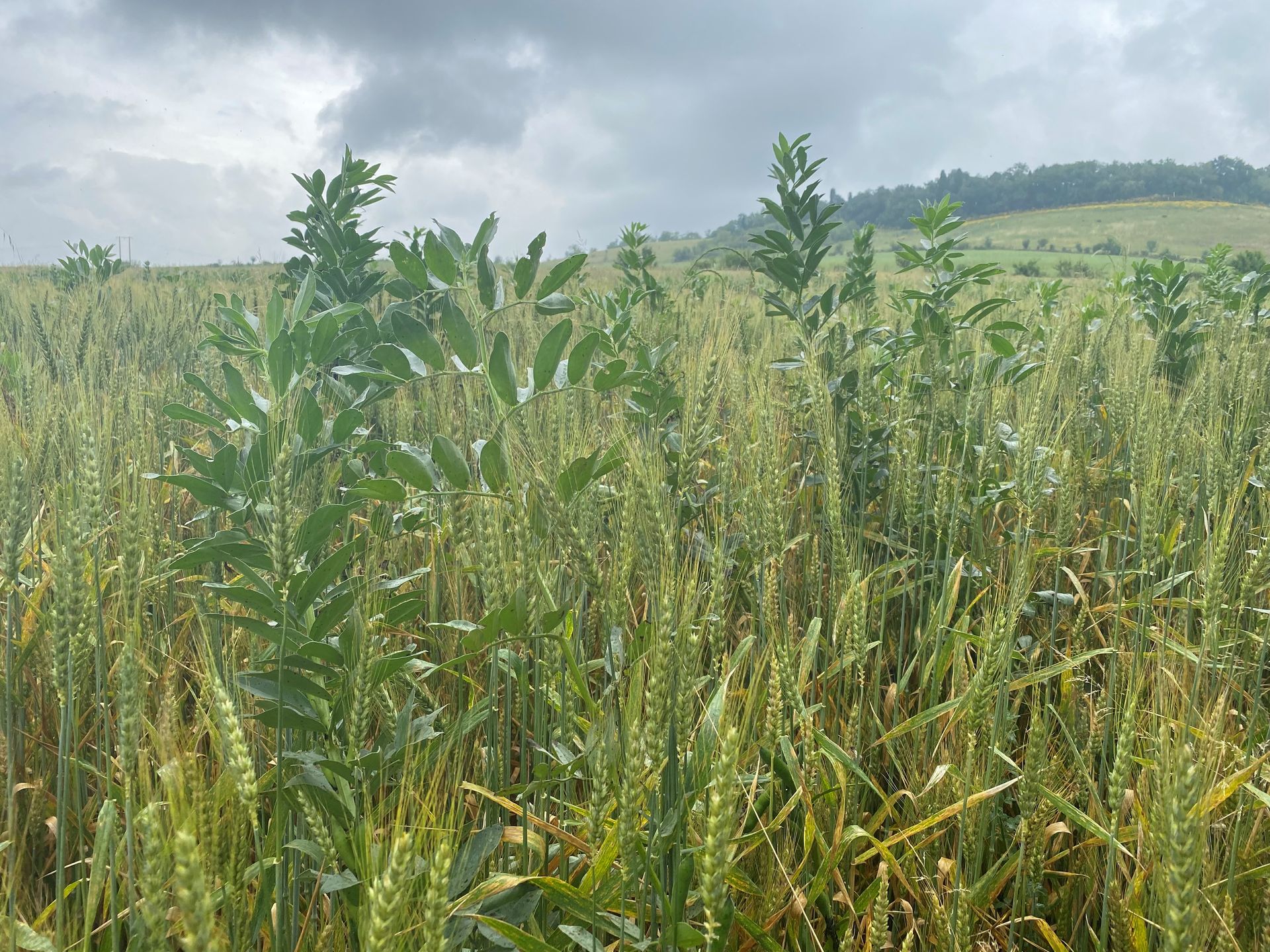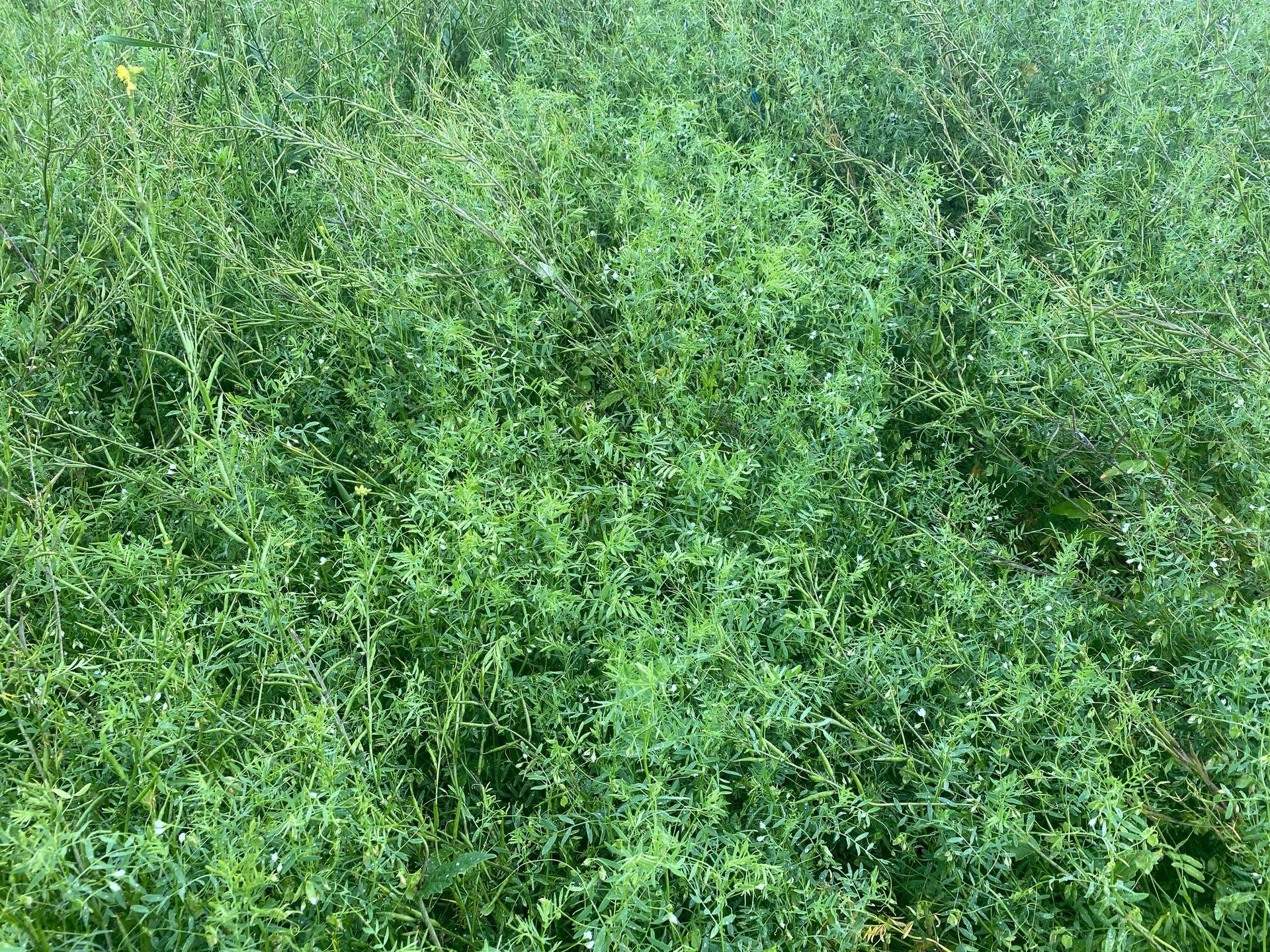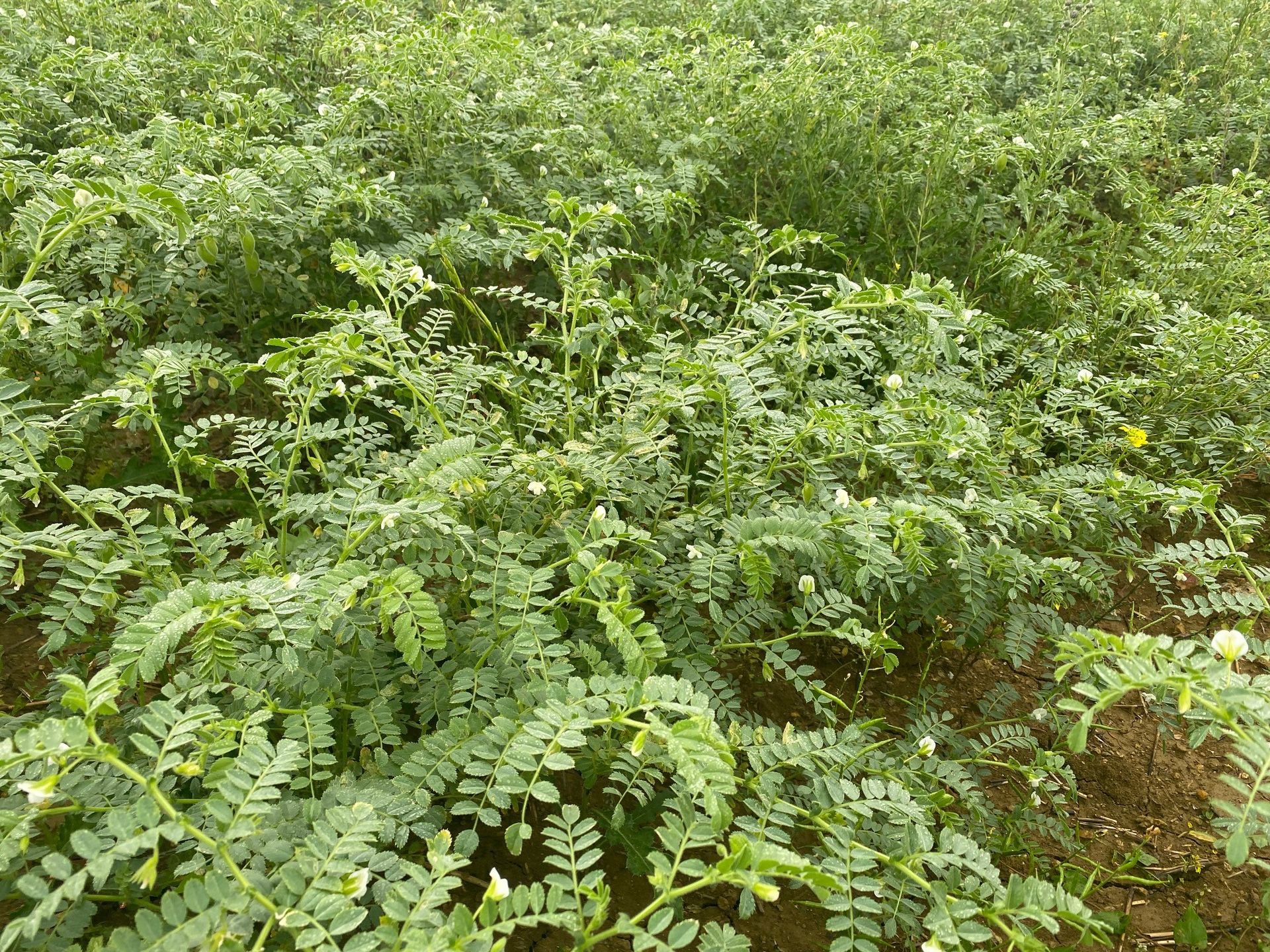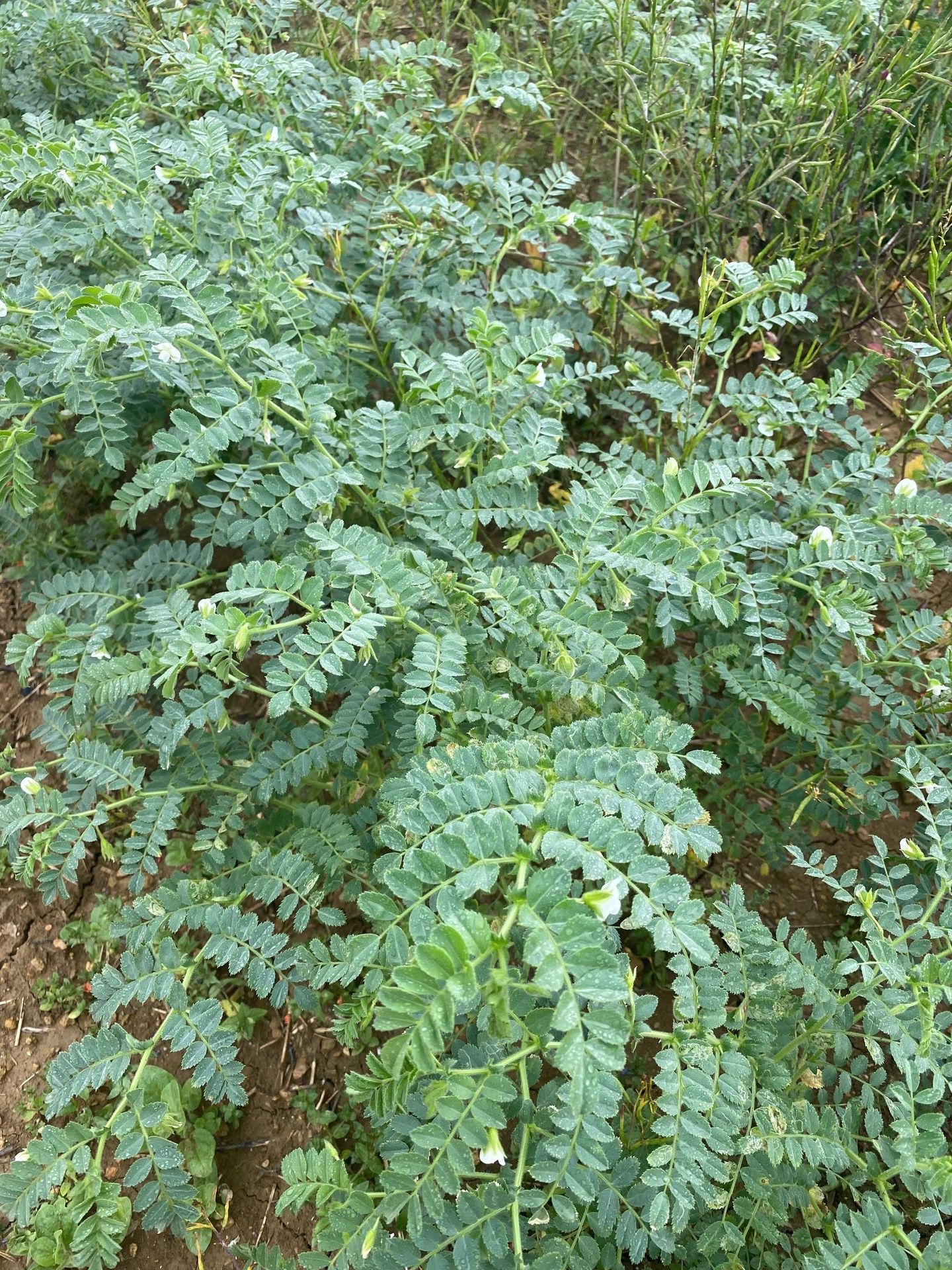Greetings all from South West France, an agronomists paradise with filed upon field of combinable crops amongst a beautiful landscape of rolling hills where there is a strong Organic as well as local spirit, intercropping is commonplace and you don't even need to look that hard to find agroforestry systems. The region has very little livestock so combinable crops are ubiquitous, with grain legumes and green manures helping to build fertility. The lack of livestock also means a distinct lack of leys in the Organic systems. The most widespread crops are wheat, barley, sunflower, maize and field beans but also significant amounts of soya, oats, linseed, buckwheat and lentils. It is also quite common to see fields of wheat bean bi-crops.
I am here on a working holiday, using the opportunity of staying with my old colleague at ORC, Ambrogio, who now works for ITAB, a French Organic Research Institute, to tour some field crop research stations, exploring the various crop trials they conduct in this part of the World. The French farmer networks and local supply chains are more advanced than in the UK and much of the research here focusses more on farmer selection of varieties and populations and also participatory plant breeding.
The first trial I visited was at Purpan, an engineering University specialising in life sciences, agriculture and food, just outside Toulouse, where they are conducting research into rivet populations. Rivet is an old wheat, closely related to Durum and can therefore be used to make pasta. We were shown the trials and asked to score each rivet out of ten and rank our five favourites as well as provide a list of the important traits we considered whilst making our evaluations. The rivets are also being grown on several farms in the region and are being turned into pasta by a local business so are part of a real world supply chain. At ORC we had conducted some research on two rivet wheats in the UK, Rampton and Blue cone and had found them to be agronomically quite intriguing but the major flaw seemed to be the amount of necking with large ears falling to the ground near harvest as a result of stormy weather. There were some very good looking crops on display and I couldn't help wonder if, rather like spelt, rivet could be another "old" winter wheat option for organic rotations, with the suitable traits it possess, though we would have to work very hard to develop a market for British pasta wheat. I have to say that from a purely aesthetic perspective, in my opinion, Rivet ears may be the most attractive of all the wheats. We also looked at einkorn trials at the same site, repeating the process of evaluation that we had undertaken on the rivet. Einkorn is the first domesticated wheat crop and considered one of the "ancient cereals" along with Emmer and Spelt (the hulled wheats). Einkorn produces many tillers leading to many small ears and has a vigorous growth in the spring. Like spelt, einkorn must be de-hulled before being milled and remains a very niche crop with low yields and difficulties in processing.
The same company using rivet for pasta is also using einkorn for the same purpose and we were treated to a lunch of various pasta salads made from the two crops. (Hover the cursor over the pictures below to see a description of the image).
Yesterday I visited trials run by CREABio (a regional organic research and experimentation centre), held at an agricultural school in Auch. They had a multitude of trials including, wheat populations, demonstration trials of ancient wheat, modern malting barley variety trials, lentil variety trials, maize populations and chickpeas, as well as phosphate trials applied to wheat.
One landrace that has been historically cultivated in the area for many years, Rouge de Bordeaux, is included in the trials and is being grown on many farms in the region and is widely used in local boulangeries as it is favoured by the bakers. Farmers are involved in the selection of different landraces and inclusions of single lines from gene banks, with improvements being made in the field performance of these wheats. Farmers can also use the populations to make single ear selections of the best looking plants in the field with the whole process being mediated by coordinators and researchers from CREABio. The UK is a long, long way from this and may never be at a point culturally or logistically to get there as we just don't share the history and passion for bread and "terroir" and we lack local supply chains, and miss a proclivity towards political anarchy! It is also important to know that the South West of France is not only self sufficient in milling wheat but also exports it. In this context there is a critical mass of wheat production able to support the more innovative and niche approaches to breeding, selection and cultivation that populations provide. The farmers are in a sense, more empowered by the local context to empower themselves!
In discussion on the day I came to a conclusion that whilst work on populations and participatory breeding in the UK is a nice ideal, all the while the more commercial, orthodox organic winter wheat production, reliant on modern varieties, was in decline and projects like LiveWheat, evaluating modern wheats under the conditions they are destined to be cultivated in, have been needed to stem that tide and maintain the acreage and even increase it. Protecting and securing organic winter wheat production can act as a springboard now to innovation, starting with mixtures as the easiest way to introduce some diversity into the field, selecting each component on specific complimentary traits, using functional agrobiodiversity, rather than a more random approach. The focus for me should be an improvement in the efficiency of resource capture for organic farming, and we are starting to understand how to achieve this through the LiveWheat Legacy project, work funded and coordinated by Organic Arable with huge support from our members who take part. Working collectively, albeit a long way from the French model, we can achieve significant things.
